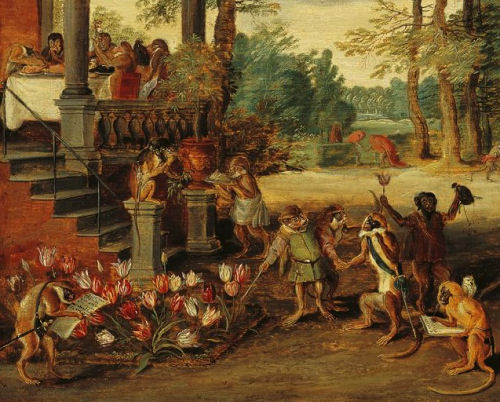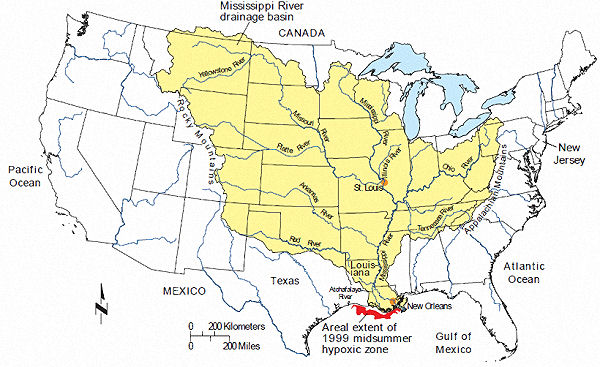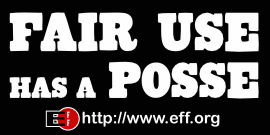
|

wars float financial
bubbles When
new money is printed, its effect is
not felt instantaneously.
The effect moves from a networked individual
to another networked individual and thus from a networked market to another
networked market.
Monetary pumping generates bubble activities across
all market sectors.
When
the bank tightens its monetary stance by reducing monetary pumping bubble
activities are undermined and those bubbles burst.
Since monetary
pumping generates bubble activities across all markets, obviously the eventual
bursting of the bubbles will permeate all markets.
1531 Antwerp
1548
Lyon
1602 Dutch East India Company begins
exchanging stock in Amsterdam.
The first book in history of securities
exchange, the Confusion of Confusions, was written by the Dutch-Jewish
trader Joseph de la Vega and the Amsterdam Stock Exchange is often
considered the oldest “modern” securities market in the
world.

"A Satire of Tulip Mania" by Jan Brueghel the
Younger (ca. 1640)
depicts speculators as brainless monkeys in contemporary
upper-class dress.
tulip mania bubble February 1637 At the peak of tulip mania
tulip futures contracts are selling for more
than 10 times the annual income of a skilled craftsman.
Tulip mania or
tulipomania (Dutch: tulpenmanie, tulpomanie, tulpenwoede, tulpengekte, and
bollengekte) was a period in the Dutch Golden Age during which contract prices
for bulbs of the recently introduced tulip reached extraordinarily high levels
and then suddenly collapsed.
The Mosaic virus created beautifully
varigated blooms spread only through buds, not seeds, and so cultivating the
most appealing varieties takes years.
But propagation is greatly slowed
down by the Mosaic virus.
Tulips bloom in April and May for only about
a week, and the secondary buds appear shortly thereafter.
Bulbs can be
uprooted and moved about from June to September, and thus actual purchases (in
the spot market) occurred during these months.
During the rest of the
year, traders signed futures
contracts before a notary to purchase tulips at the end of the
season.
The futures contract
promises to guarantee
delivery of specificied assets, in this case tulip bulbs, on a specific
date for an agreed upon fixed price.
Short selling is banned by an edict of 1610,
which is reiterated or strengthened in 1621 and 1630, and again in
1636.
Short sellers were not prosecuted
under these edicts, but their contracts are deemed unenforceable.
1636 Dutch create a type of formal
futures market where contracts to buy
bulbs at the end of the season are bought and sold.
Traders met in
"colleges" at taverns and buyers were required to pay a 2.5% "wine money" fee,
up to a maximum of three florins, per trade.
Neither party paid an
initial margin nor a mark-to-market margin, and all
contracts were with individual counterparties rather than the exchange.
No deliveries were ever made to fulfill these contracts because of the
market collapse in February 1637.
On February 24, 1637, the
self-regulating guild of
Dutch florists, in a decision that
was later ratified by the Dutch Parliament, announced that all futures
contracts written after November 30, 1636 and before the re-opening of the cash
market in the early Spring, were to be interpreted as
call option contracts,
or options to purchase in the
future.
This change of law was done at the behest of major Dutch
tulip investors who were trying to recoup lost money because of a German
setback in the
Thirty Years' War.
They simply relieved the futures
purchaser of the requirment to purchase if they paid a small fixed percentage
of the contract price as a default on the failure to purchase.
An option
contract purchases the right to buy an asset at a date in the future at an
agreed upon price.
This trade was centered in Haarlem during the height
of a bubonic plague epidemic, which
may have contributed to a culture of fatalistic risk taking.

the Mississippi bubble
"Imagine the following: a collection of debts owed
by a highly leveraged borrower with
a bad credit record is magically transformed into
marketable securities with triple-A yields.
How is this miracle performed?
It is through the power of
financial innovation and free capital markets!
It could be the story of
subprime mortgages in the US; but it is not.
It is the story of government debt in France in the early 18th century.
In 1719-20, a
financial whirlwind swept through France.
Shares in the Compagnie
d'Occident, or the Mississippi Company, rose 1,000 per cent and then fell by 90
per cent in less than two years.
The story illuminates current events."
- James Macdonald, Financial Times (London) March 6, 2008 HOW THE FRENCH INVENTED SUBPRIME IN
1719
By the end of the War of Spanish
Succession in 1714 public debt had risen to over 100 per cent of national
income and was subjected to forced reductions of interest and principal.
Confidence collapsed.
Government bonds sold for discounts of up
to 75 per cent.
Louis XIV, the "Sun King," had consolidated French
power in Europe but the Nine Year War and the War of Spanish Succession had
effectively bankrupt France by 1715 the year of Louis XIV's death.
France defaulted on its debt, high taxes burdened the country and the
value of gold and silver currency fluctuated wildly.
Louis XV turned to
the Duke of Orleans who hired John Law, a Scottish adventurer, economic
theorist, and financial wizard/engineer.
The
charismatic John Law
lived by his wits at the gambling table
and had never held any post related to public finance.
The government
would issue a new series of bonds, paying only 3 per cent in exchange for its
old debts which paid 4-5 per cent, in exchange for shares in the Mississippi
Trading Company, which held monopoly trading rights to the French colonies.
For the government, the cost of servicing the debt would fall sharply
and the budget would look rosier.
The trading rights to the French
colonies were largely worthless, for there were no profits at the time and the
Mississippi Company had existed for a while without exciting public
interest.
The market for government debts was moribund.
John
Law's aim was to make Mississippi shares as actively traded as
possible.
This provided an incentive to swap - to get a more liquid
security and the prospect of speculative gains.
John Law repackaged a
collection of "subprime" debts as marketable securities under a different name
and thereby increased their investor appeal.
Law claimed that
Mississippi shares would be so actively traded that they would constitute "a
new form of money."
For this governmnet debt reduction plan to succeed
a new bank must be founded to provide a massive monetary stimulus of easy money
to get bond holding creditors to convert government bonds into Mississippi
trading company shares.
1716 John Law established the
Banque Générale, a bank with the
authority to issue
fiat bank notes.
In 1717 John
Law established the Compagnie d'Occident ("Company of the West") and
obtained a 25-year monopoly to develop the vast French territories in the
Mississippi River valley of North America.
Compagnie d'Occident
soon monopolized the French tobacco and African slave trade, and by 1719 the Compagnie des
Indes ("Company of the Indies"), as it had been rebranded, held
a complete monopoly
of France's colonial trade.
John Law took over the collection of French
taxes and the minting of money.
In effect, John Law controlled both the
country's foreign trade and its finances.
An effective marketing
scheme was developed describing the Compagnie des Indes as a future
profit generator due to its monopolistic controls of the exaggerated wealth of
Louisiana.
This marketing scheme sent the price for a share from 500 to
10,000 livres , completely out of all proportion to earnings.
The debt
was exchanged and became worth many times its previous value as Mississippi
shares continued their dizzying
ascent.
The economy recovered and
everyone was happy - even
though the underlying reality was
an unsustainable
credit-driven boom.
1719 John Law had issued
approximately 625,000 stock shares, and he soon afterward merged the Banque
Générale with the Compagnie des Indes.
The
Compagnie bought the right to collect all French indirect taxes, took
over the collection of direct taxes, purchased the right to mint new coinage.
The center piece of this financial plan was the retirement of Louis
XIV's debt.
Shares of the Compagnie des Indes were exchanged for
state-issued public securities, or billets d'état, which consequently
also rose sharply in value.
The French government debt, 1,000% of the
annual budget, became property of the Compagnie des Indes.
The
French government takes advantage of this situation by printing increased
amounts of paper money, which was readily accepted by the state's creditors
because it could be used to buy more shares of the Compagnie.
The underlying assets of the Mississippi Company were still
questionable royal debts that did not provide enough income to pay its promised
dividends.
Excessive issue of paper
money stimulated galloping inflation, and both the
paper money and the billets
d'état began to lose their value.
Moreover, like many
holders of collateralized debt obligations,
speculators in Paris relied heavily on borrowed money.
The rise in
Mississippi shares is reversed.
Shareholders find themselves holding
toxic debt.
1720 The value of the
shares of the Compagnie plummeted, causing a general stock market crash
in France and other countries.
Financial engineer John Law is
forced to flee France.
The
debts of his company and bank were consolidated and made good by the state
which raised taxes in order to retire the debt.

South Sea
bubble 1711
South Sea Company, a joint stock incorporation is granted a monopoly to
trade in the South American colonial possessions of
Spain as part of a treaty during the War
of Spanish Succession.
The South Sea Company assumes the
bonded debt England incurred
during the war in return for the monoploy.
The
primary trading business of the
South Sea Company was transporting slaves from
Africa to America.
South Sea Company proposed a scheme by which it
would assume half the bonded
debt of Britain (£30,981,712) with new shares and
contractually promises to the
government that the debt will be converted to a lower interest rate, 5%
until 1727 and 4% per year thereafter.
The purpose of this is to
allow a conversion of high-interest
bonded debt into low-interest marketable debt as shares of the South Sea
Company.
The South Sea Company market the stock with "the most
extravagant rumours" of the value of its potential trade in the New
World.
A frenzy of wild
speculation ensues leading to the South Sea Bubble.
1720 The share price rises from £128 in January to
£890 in early June even though trade with Spanish colonies is limited to
one ship carrying not more than 500 tons of cargo and the slave trade.
When the speculative adventure collapsed the estates of the directors
of the incorporation are confiscated and used to repay some creditors, and the
stock of the South Sea Company is divided between the major creditors -
the Bank of England and British East India
Company.
In summation all
three of these speculative run-ups in the value of tulip bulbs or 'stock' was
caused directly by war.
Tulip investors were trying to recoup loses
from betting on Germany winning the Thirty Years War while both the South Sea
and Mississippi bubbles were designed to retire onerous government debt due
primarily to the expenses involved in the War of Spanish Succession.
|
|

 |
This web site is not a commercial web site and
is presented for educational
purposes only.

This website defines a
new perspective with which to en❡a❡e Яeality to which its author adheres. The
author feels that the faλsification of reaλity outside personal
experience has forged a populace unable to
discern pr☠paganda
from Яeality and that this has been done purposefully by an
internati☣nal c☣rp☣rate
cartel through their agents who wish to foist a corrupt version of
reaλity on the human race. Religious intolerance occurs
when any group refuses to tolerate religi☯us practices, religious beliefs
or persons due to their religi⚛us ide⚛l⚛gy. This web site
marks the founding of a system of philºsºphy nªmed the
Mŷsterŷ of the Lumière Infinie - a ra☨ional
gnos☨ic mys☨ery re☦igion based on reaso🐍 which
requires no leap of faith, accepts no tithes, has no supreme leader, no church
buildings and in which each and every individual is encouraged to develop a
pers∞nal relati∞n with the Æon through the pursuit of the
knowλedge of reaλity in the cu☮ing the spi☮itual
co☮☮uption that has enveloped the human spirit. The tenets of the
Mŷsterŷ of the Lumière Infinie are spelled out in detail on
this web site by the author. Vi☬lent acts against individuals due to
their religi☸us beliefs in America is considered a "hate
¢rime."
This web site in no way condones violence. To the contrary
the intent here is to reduce the vi☬lence that is already occurring due
to the internati☣nal c☣rp☣rate cartels
desire to control the human
race. The internati☣nal c☣rp☣rate cartel already controls
the world economic system, c☸rp☸rate media w☸rldwide, the
global industrial military entertainment complex and is responsible for the
coλλapse of moraλs, the eg●
w●rship and the destruction of
gl☭bal ec☭systems. Civilization is based on coöperation.
Coöperation with bi☣hazards at
the point of a
gun.
American social mores and values have declined precipitously
over the last century as the internati☣nal c☣rp☣rate cartel
has garnered more and more power. This power rests in the ability to deceive
the p☠pulace in general through c✡rp✡rate media by
press☟ng em☠ti☠nal butt☠ns which have been
πreπrogrammed into the πoπulation through prior mass media
psychological operations. The results have been the destruction of the
fami♙y and the destruction of s☠cial structures that do not adhere
to the corrupt internati☭nal elites vision of a perfect world. Through
distra˘tion and ˘oer˘ion the dir⇼ction of th✡ught of the bulk of the
p☠pulati☠n has been direc⇶ed ⇶oward s↺luti↻ns proposed by the
corrupt internati☭nal elite that further con$olidate$ their p☣wer
and which further their purposes.
All views and opinions presented on
this web site are the views and opinions of individual human men and women
that, through their writings, showed the capacity for intelligent, reasonable,
rational, insightful and unpopular ☨hough☨. All factual information presented
on this web site is believed to be true and accurate and is presented as
originally presented in print media which may or may not have originally
presented the facts truthfully.
Øpinion and ☨hough☨s
have been adapted, edited, corrected, redacted, combined, added to, re-edited
and re-corrected as nearly all opinion and ☨hough☨ has been throughout time but
has been done so in the spirit of the original writer with the intent of making
his or her ☨hough☨s and opinions clearer and relevant to the reader in the
present time.
Fair Use Notice

This site may contain
copyrighted material the use of which has not always been specifically
authorized by the copyright owner. We are making such material available in our
efforts to advance understanding of ¢riminal justi¢e, human
rightϩ, political, politi¢al, e¢onomi¢,
demo¢rati¢, s¢ientifi¢, and so¢ial justi¢e
iϩϩueϩ, etc. We believe this constitutes a 'fair use' of any
such copyrighted material as provided for in section 107 of the US Copyright
Law. In accordance with Title 17 U.S.C. Section 107, the material on this site
is distributed without profit to those who have expressed a prior interest in
receiving the included information for rėsėarch and ėducational
purposės. For more information see:
www.law.cornell.edu/uscode/17/107.shtml. If you wish to use copyrighted
material from this site for purposes of your own that go beyond 'fair use', you
must obtain permission from the copyright owner. |
 Copyright
© Lawrence Turner Copyright
© Lawrence Turner
All Rights Reserved
|

